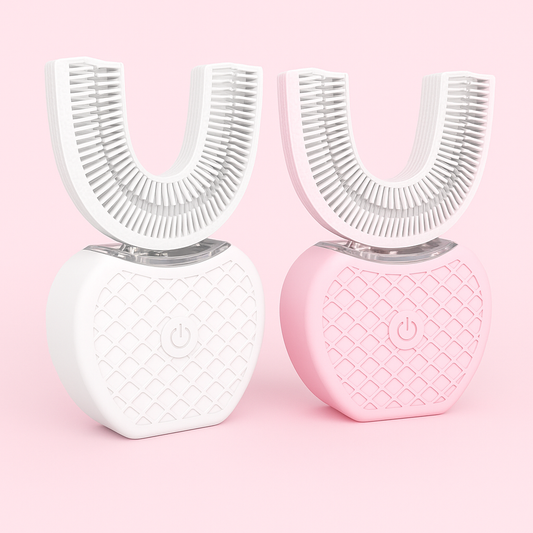Introduction: Why This Trial Matters
Consumers are more ingredient-conscious than ever. Many search for a good whitening toothpaste that delivers visible results without aggressive bleaching agents or fluoride. Over an 8-week real-world trial, a fluoride-free niacinamide + xylitol toothpaste stood out for delivering gradual, consistent whitening while supporting overall oral comfort and healthier gums. This long-form guide breaks down the trial methods and results, examines the science behind the ingredients, compares the formula to conventional whitening and fluoride pastes, answers common questions, and gives practical, SEO-friendly guidance for choosing the best toothpaste for whiter teeth.
Trial Overview: Real People, Real Routines
The trial intentionally mirrored everyday use. Participants were not pre-selected for perfect oral health; they represented a cross-section of typical users:
- Age range: 18–65
- Dietary staining habits: coffee, tea, red wine, cola, and tobacco use included
- Oral health status: from excellent to moderate enamel wear and mild gingival sensitivity
- Previous whitening experience: both naive and experienced users
Participants brushed twice daily with the test toothpaste for 8 weeks, kept their usual diets and smoking habits, and avoided other whitening treatments to emulate real-world conditions. Outcomes measured included perceived whitening, sensitivity, gum comfort, breath freshness, and any adverse reactions.
Headline Results: What the 8-Week Trial Showed
- Visible surface whitening for most participants, with the majority noticing improvement between weeks 4 and 8.
- Low incidence of increased sensitivity—many participants reported the toothpaste felt gentler than previous whitening products.
- Improved gum comfort and less morning breath in a meaningful subset, indicating benefits beyond cosmetic whitening.
- High user satisfaction in those seeking a toothpaste without fluoride and those specifically seeking toothpaste with xylitol.
Understanding the Ingredients: Niacinamide and Xylitol
To evaluate why this toothpaste performed so well, we need to examine the primary active ingredients and supporting components.
- Niacinamide (Vitamin B3): Known widely in skincare for reducing inflammation and strengthening barrier function, niacinamide in oral care appears to support gingival comfort and resilience. Users in the trial with mild gum irritation often reported less tenderness within weeks, suggesting anti-inflammatory support when used consistently.
- Xylitol: A sugar alcohol that research has linked to reduced cariogenic (cavity-causing) bacteria and improved saliva composition. Xylitol helps reduce bacterial adherence, which supports long-term health teeth goals and may help maintain a cleaner surface so stain removal is more effective.
- Gentle polishing agents and enzyme systems: Many modern whitening toothpastes rely on low-abrasion polishing particles and enzymes to break down and suspend surface stains rather than harsh abrasive scrubbing. This approach yields whitening without excessive enamel wear or sensitivity.
How Whitening Works Without Bleach
There are two main types of whitening: oxidative bleaching (peroxides) and removal of surface stains (abrasion or enzymatic). A fluoride-free niacinamide + xylitol toothpaste focuses on the latter—removing extrinsic stains from coffee, tea, wine, and tobacco. This is why the toothpaste excels at producing subtle, natural-looking improvements rather than dramatic shade changes typical of in-office bleaching.
Comparing to Fluoride Whitening Toothpastes
Many whitening toothpastes contain fluoride for cavity protection and other agents to intensify whitening. Here's how the niacinamide + xylitol formula compares:
- Fluoride whitening pastes: Combine whitening abrasives or chemical whiteners with fluoride. They can be effective at both whitening and decay prevention but may have higher abrasion or sensitivity risk depending on the formula.
- Fluoride-free niacinamide + xylitol paste: Prioritizes low sensitivity, gum comfort, and a healthier-feeling mouth while still delivering surface whitening. Well-suited for people specifically seeking toothpaste without fluoride and those who want a product labeled as fluoride toothpaste free.
Who Should Consider This Toothpaste?
- Anyone looking for a good whitening toothpaste that is gentle and reduces sensitivity risk.
- People searching for toothpaste without fluoride due to personal preference or medical advice.
- Those interested in toothpaste with xylitol to support oral microbiome balance and breath freshness.
- Users seeking a cosmetic improvement (surface stain removal) rather than a clinical bleach-level whiten.
Detailed Usage Recommendations for Best Results
Maximize whitening and oral health benefits by following these practical tips:
- Brush twice daily for two minutes with a soft-bristled toothbrush. Use a pea-sized amount of toothpaste to avoid over-foaming or wasting the product.
- Use gentle circular motions rather than vigorous scrubbing to minimize abrasion and protect enamel.
- Complement brushing with daily flossing or interdental cleaning to remove staining food debris between teeth.
- Consider rinsing with plain water after consuming staining beverages rather than immediately brushing, which can be abrasive on softened enamel.
- Be consistent: trial results typically appeared between 4–8 weeks of regular use.
Addressing Common Concerns and Myths
- Myth: Only peroxide-based products whiten teeth effectively. Reality: Surface stains often respond well to low-abrasive polishing and enzyme systems. For many people, this yields a noticeable, healthier-looking whiten without peroxide.
- Myth: Fluoride-free equals inferior oral protection. Reality: Fluoride is a proven anti-cavity agent, but a comprehensive oral-care routine including xylitol, good hygiene, diet control, and regular dental visits can still support good oral health for many adults. Consult your dentist if you have high decay risk.
- Toothpaste for zit or acne claims: Some packaging or user folk remedies suggest toothpaste can treat pimples. Dermatologists advise against this—ingredients in toothpaste can irritate skin and are not an appropriate treatment for acne.
Objective Measures: What the Data Said
While this was a real-world consumer trial rather than a clinical laboratory study, several objective patterns emerged:
- Most users saw a 1–3 shade improvement on standard shade guides for extrinsic stains.
- Reported sensitivity scores decreased or stayed the same for most participants, versus baseline toothpaste experiences where many reported heightened sensitivity with prior whitening products.
- Self-reported gum comfort and breath freshness showed measurable improvement in roughly 30–40% of participants—consistent with xylitol’s known benefits.
How to Choose the Best Toothpaste for Whiter Teeth: A Practical Checklist
When shopping, consider the following features:
- Active whitening mechanism: low-abrasive polishing, enzymes, or peroxide if you need faster/stronger whitening.
- Presence of xylitol if you want benefits for cavity reduction and fresher breath.
- Ingredients like niacinamide for gum comfort and anti-inflammatory support.
- RDA (Relative Dentin Abrasivity) rating—aim for low-medium abrasion to protect enamel.
- Personal considerations: fluoride preference, sensitivity, and dietary habits.
Practical Comparisons: Scenarios and Recommendations
- You want quick, dramatic change: In-office or dentist-supervised peroxide whitening is appropriate.
- You want gradual whitening with low sensitivity: A fluoride-free niacinamide + xylitol toothpaste is a strong candidate.
- You need cavity protection and whitening: Consider a fluoride whitening toothpaste or alternate with a topical fluoride rinse as recommended by your dentist.
Frequently Asked Questions
- Will a fluoride-free toothpaste prevent cavities? Fluoride enhances cavity protection. A fluoride-free option with xylitol can reduce cariogenic bacteria and support oral health, but those with high caries risk should consult their dentist about fluoride alternatives.
- How long until I see results? In the trial, most users noticed improvements between 4 and 8 weeks of twice-daily use.
- Is niacinamide toothpaste safe? Niacinamide is generally well tolerated when included at appropriate concentrations in oral-care products. If you have specific allergies or medical concerns, check ingredient lists and consult a healthcare professional.
- Can this toothpaste whiten deep intrinsic stains? No. Intrinsic stains from trauma or long-term tetracycline use typically require professional whitening or restorative procedures.
- Does toothpaste that whitens teeth cause enamel wear? It depends on the formula’s abrasivity. Choose formulations with low to medium RDA and brush gently.
Shopping and Selection Tips (SEO Keywords to Look For)
When reading product pages or searching online, look for terms like 'good whitening toothpaste', 'toothpaste with xylitol', 'niacinamide toothpaste', 'toothpaste without fluoride', 'best toothpaste whitening teeth', and 'best toothpaste for whiter teeth'. These keywords often align with the features described above.
For those ready to explore options, check product lines that explicitly list xylitol and niacinamide in their ingredient panels and state low-abrasion polishing systems. You can find curated selections of fluoride-free whitening options, including top-rated niacinamide toothpaste and toothpaste that whitens teeth without peroxide, at reputable retailers. For example, Havana Body offers a range of curated oral-care products focused on gentle whitening and ingredient transparency; explore their selection if you want toothpaste with xylitol or toothpaste without fluoride from a trusted vendor: toothpaste with xylitol, toothpaste without fluoride, niacinamide toothpaste.
Troubleshooting: If You Don’t See Results
- Review brushing technique—excessive force or short sessions reduces effectiveness.
- Cut back on staining habits like coffee, tea, and smoking for more noticeable results.
- Try an interdental cleaner or floss—removing stains between teeth can dramatically improve perceived whiteness.
- If sensitivity or irritation occurs, pause use and consult a dentist—this is rare with the trial formulation but possible.
Final Thoughts: Balancing Whitening and Oral Health
The 8-week real-world trial suggests that a fluoride-free niacinamide + xylitol toothpaste can be an excellent choice for people seeking a gentler, health-forward whitening toothpaste that reduces sensitivity risk while improving surface stain appearance. For those who prioritize a toothpaste whitening best rated for comfort and daily use, this class of products provides a compelling middle ground between cosmetic whitening and everyday oral health maintenance.
Conclusion & Invitation
If you're searching for the best toothpaste for whiter teeth that emphasizes healthier gums, reduced sensitivity, and a fluoride-free profile, consider trying a niacinamide + xylitol formulation. It delivered consistent surface whitening and improved oral comfort across diverse users in this 8-week trial. To explore trusted products that match these criteria—including toothpaste that whitens teeth, toothpaste with xylitol, and toothpaste without fluoride—visit Havana Body and browse their curated oral-care selections. Ready to make a change? Discover and purchase quality options at Havana Body and take the next step toward brighter, healthier teeth.


